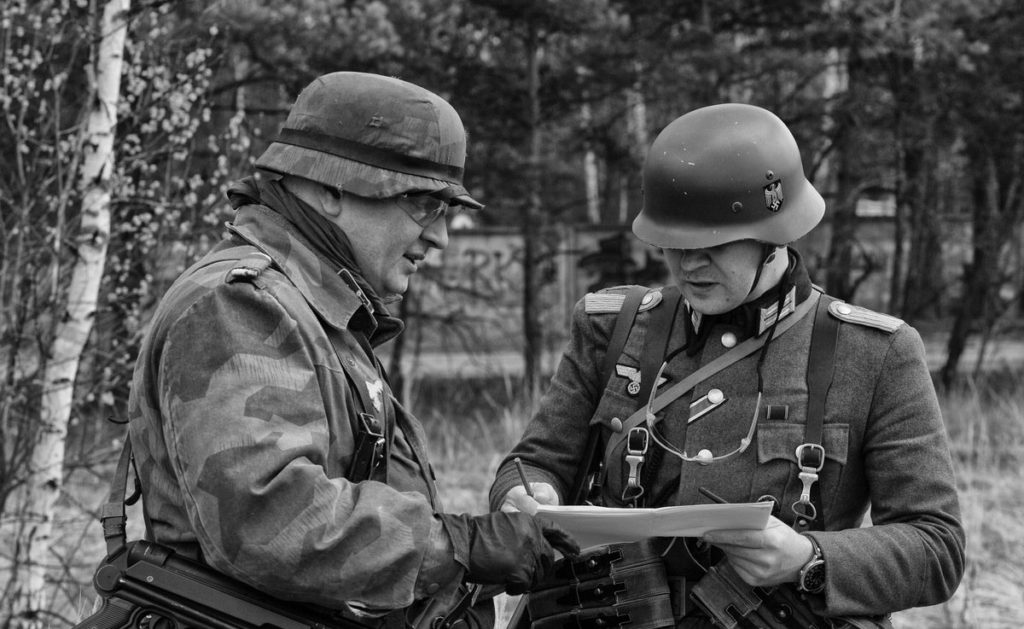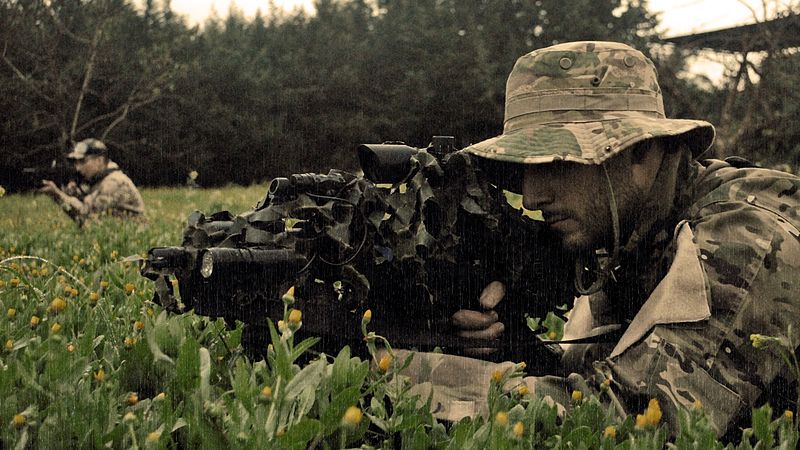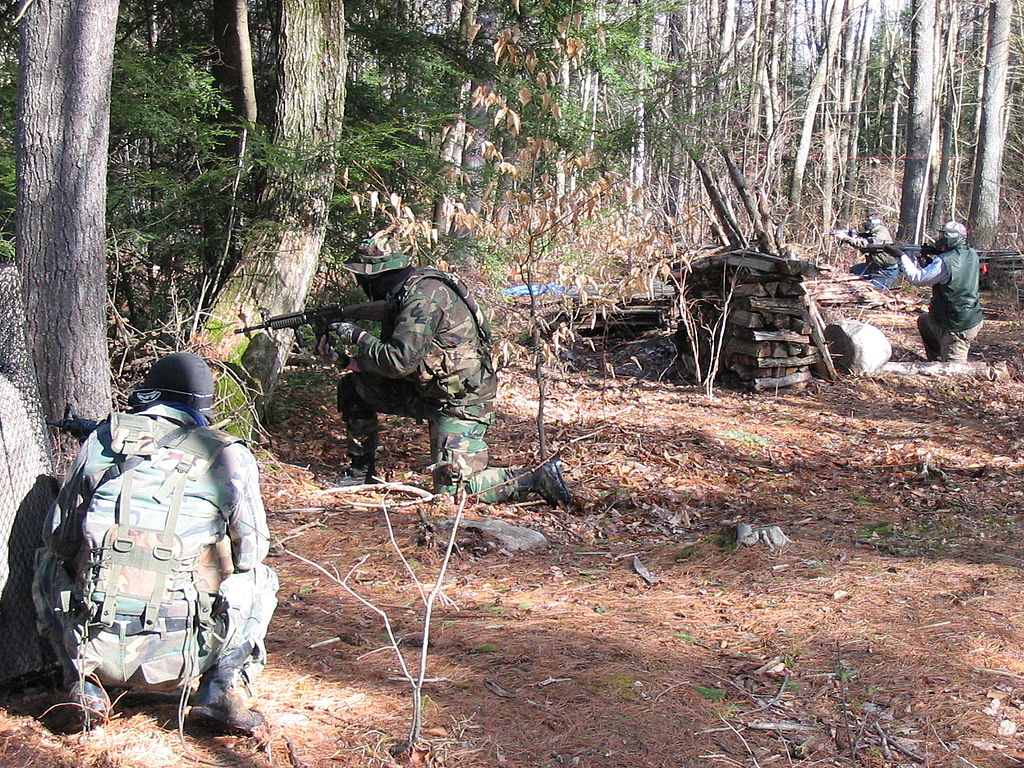Airsoft is a competitive team shooting sport in which participants shoot opponents with spherical plastic projectiles launched via replica air weapons called airsoft guns.
Airsoft pellets, or BBs, do not typically mark their target, and hits are not always visibly apparent. Though the pellets can leave red marks or “welts” on exposed skin, the game relies heavily on an honor system in which the person who has been hit is responsible for calling themselves out.[1] Airsoft guns are typically magazine-fed, with some having replaceable compressed gas (e.g. propane, 1,1,1,2-Tetrafluoroethane/”green gas” or CO2) canisters. Many airsoft guns also have mounting platforms compatible with genuine firearm accessories, and more closely resemble real guns. This makes them popular for military simulation and historical reenactments.




